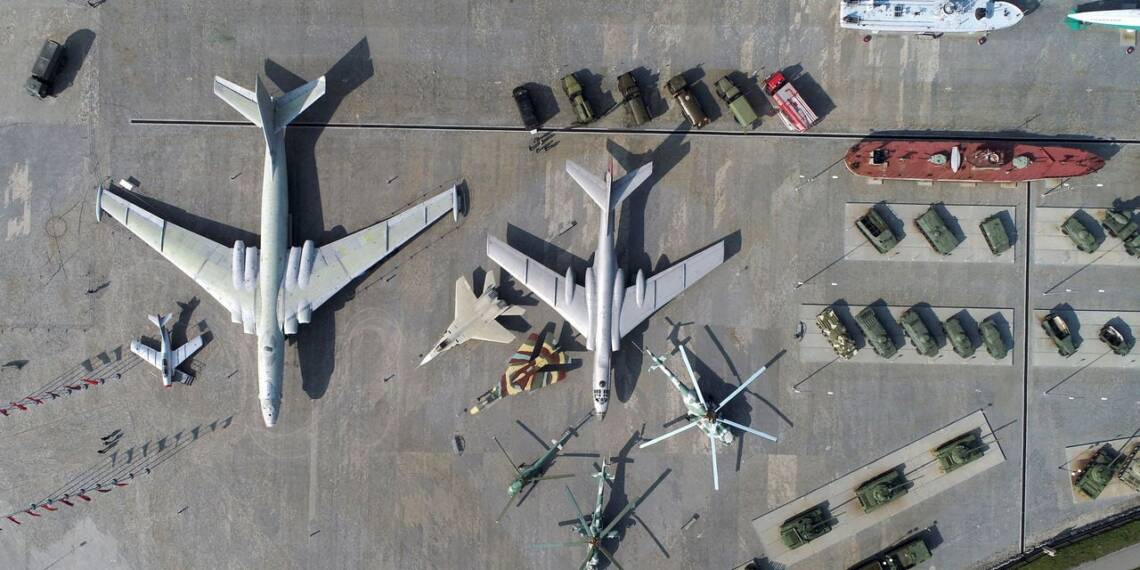On April 10, Army General Christopher G. Cavoli, head of the U.S. European Command and NATO’s Supreme Allied Commander, briefed the House Armed Services Committee on the Russian military’s status amid the ongoing Ukraine conflict, now in its third year. General Cavoli highlighted that the Russian Air Force has maintained much of its strength, with minimal losses in its strategic aviation fleets as reported by Air and Space Forces Magazine. He noted that while the Air Force has lost about 10% of its aircraft, there have been no reductions in capabilities across Russia’s strategic forces, including cyber and space operations.
General Cavoli also acknowledged some human and material toll on Russia. He detailed how Moscow continues to support its military engagements, notably through acquiring ballistic missiles from North Korea and drones from Iran, aiding in the sustainment of its operations.
Moreover, Cavoli described the Russian military’s operational strategy of conducting intermittent large-scale attacks, which coincide with their production cycles. “They produce, they save up, they launch a big attack,” he stated, summarizing their approach to maximizing their strike capabilities.
He also noted a tactical shift in Russian aircraft operations. Initially facing challenges from allied air defenses, Russian warplanes have increasingly relied on standoff weaponry and have adapted their flight patterns to avoid areas well-covered by defensive systems supplied by Western allies.
By the close of February, marking two years since the invasion began, the Ukrainian military reported the destruction of 342 Russian planes and 325 helicopters. These figures could not be independently verified. Between mid-February and early March alone, Ukrainian forces claimed to have downed approximately two dozen Russian fighter jets, including several Su-34 Fullback bombers, known for their use of guided munitions. Again, they were never mentioned by Cavoli.
In a recent escalation of the ongoing conflict, Ukrainian Air Force commander Mykola Oleshchuk celebrated significant operational successes against Russian aerial forces, highlighting the shootdown of two Su-34 bombers. Commander Oleshchuk suggested that the frequency and effectiveness of Ukrainian air defense might prompt a strategic reevaluation by Russian forces. His comments were again unverified.
Ukrainian military spokesperson Yuriy Ihnat conveyed that enhanced capabilities now allow Ukrainian forces to target and destroy Russian aircraft over considerable distances. This advancement has been attributed in part to the deployment of Patriot missile defense systems, which have been positioned nearer to the frontlines to improve their efficacy against Russian jets. Justin Bronk, a senior research fellow at the British think tank RUSI, noted this tactical shift and acknowledged its risks and rewards.
Furthermore, Ukrainian forces claimed to have extended their reach beyond direct confrontations, claiming successful attacks on Russian jets and bombers stationed on airfields inside Russia itself. These claims, were never validated, otherwise they would have been a significant blow to Russian air capabilities.
Last week when Ukrainian drones reportedly targeted multiple locations in western Russia, including an airbase that housed a squadron of Sukhoi fighters. According to Ukrainian media, four airfields were attacked: Engels, Morozovsk, Yeysk, and Kursk. These strikes reportedly resulted in the destruction of many planes at Morozovsk and significant damage to military assets at Yeysk and Engels.
The Institute for the Study of War (ISW) in Washington, DC, commented on the impact of these attacks, noting that these claims are unverified but if verified they will mark the potential loss of approximately five percent of Russia’s Tu-95 bomber fleet in a single strike and would be particularly consequential.








